| 29 December |
• yesterday • tomorrow |
| Optional Memorial of Saint Thomas Becket, Bishop and Martyr |

• Thomas Beckett
• Thomas of Canterbury
Of Norman ancestry. Educated at Merton Priory, the University of Paris, in Bologna, Italy, and in Auxerre, France. Civil and canon lawyer. Soldier and officer. Archdeacon of Canterbury, England, ordained in 1154. Friend of King Henry II. Chancellor of England. Ordained on 2 June 1162 and appointed archbishop of Canterbury on 3 June 1162. Opposed the King‘s interference in ecclesiastical matters which led to his being exiled several times and eventually murdered by supporters of the king. Martyr.
21 December 1118 at London, England
• murdered on 29 December 1170 in the Cathedral at Canterbury, England
• some relics enshrined at the Ladyewell Shrine in Lancaster, England
21 February 1173 by Pope Alexander III
• clergy
• Exeter College, Oxford, England
• Portsmouth, England
• secular clergy
• archbishop with a wounded head
• archbishop holding an inverted sword
• archbishop kneeling before his murderers
• archbishop being murdered in church
• crosier with a battle-axe head at the top
Hereafter, I want you to tell me, candidly and in secret, what people are saying about me. And if you see anything in me that you regard as a fault, feel free to tell me in private. For from now on, people will talk about me, but not to me. It is dangerous for men in power if no one dares to tell them when they go wrong. - Saint Thomas Becket to a friend on his way to ordination
For our sake Christ offered himself to the Father upon the altar for the cross. He now looks down from heaven on our actions and secret thoughts, and one day he will give each of us the reward his deeds deserve. It must therefore be our endeavor to destroy the right of sin and death, and by nurturing faith and uprightness of life, to build up the Church of Christ into a holy temple of the Lord. The harvest is good and one reaper or even several would not suffice to gather all of it into the granary of the Lord. Yet the Roman Church remains the head of all the churches and the source of Catholic teaching. Of this there can be no doubt. Everyone know that the keys of the kingdom of heaven were given to Peter. Upon his faith and teaching the whole fabric of the Church will continue to be built until we all reach full maturity in Christ and attain to unity in faith and knowledge of the Son of God. Of course many are needed to plant and many to water now that the faith has spread so far and the population become so great. Nevertheless, no matter who plants or waters, God gives no harvest unless what he plants is the faith of Peter, and unless he himself assents to Peter's teaching. All important questions that arise among God's people are referred to the judgment of Peter in the person for the Roman Pontiff. Under him the ministers of Mother Church exercise the powers committed to them, each in his own sphere of responsibility. Remember then how our fathers worked out their salvation; remember the sufferings through which the Church has grown, and the storms the ship of Peter has weathered because it has Christ on board. Remember how the crown was attained by those whose sufferings gave new radiance to their faith. The whole company of saints bears witness to the unfailing truth that without real effort no one wins the crown. - from a letter by Saint Thomas Beckett
https://catholicsaints.info/saint-thomas-a-becket/
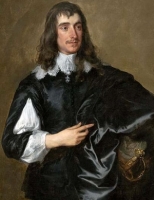
Son of Thomas, earl of Arundel, England. Grandson of Saint Philip Howard. Raised Catholic in England in a time when the faith was being persecuted. Married Mary Stafford in 1637. Viscount of Stafford in England. Baron Stafford in 1640. Exiled in 1642 for political reasons, and lived in the Netherlands. Undertook diplomatic missions in Flanders and Switzerland for Emperor Ferdinand. His family was impoverished when the English Parliment impounded his lands. Arrested in Heidelberg in 1653 and Utrect in 1656 for apparently political reasons, but he was acquitted of all charges.
In 1660 his family property was reinstated, the fortunes of his family turned around, and they returned to England. Accused of complicity in the "Popish Plot", he was sent to the Tower of London on 25 October 1678. Imprisoned for two years before they bothered to try him, he was condemned before the trial started. Though he had no involvement in the "Plot", he was martyred for being an influential, high-profile Catholic.
30 November 1614 in Strand, London, England
beheaded on 29 December 1680 on Tower Hill, London, England
15 December 1929 by Pope Pius XI
https://catholicsaints.info/blessed-william-howard/
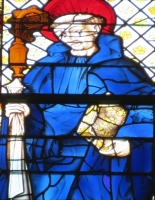
Ebrolfo, Ebrulfo, Ebrulfus, Ebrulphus, Evroul, Evroult, évroult
30 August (translation of relics)
Merovingian courtier. A married layman, he made financial arrangements for his wife, who may have later become a nun, and left the court of King Childebert I to become a monk at Deux Jumeaux abbey. He and a small group of brothers left to become hermits in the nearby forest of Ouche. Ebrulf converted a band of highway robbers to the faith. With them, the brothers, and some spiritual students who gathered around them, he founded a small monastery near Ouche, and served as its abbot. It emphasized self-sufficiency for the house, manual labour offered to God for the men, and was so successful that several other small houses were founded nearby.
626 in Bayeux, Normandy, France
• 706 of natural causes
• relics translated to Deeping Abbey, England in the 11th and 12th centuries
https://catholicsaints.info/saint-ebrulf-of-ouche/
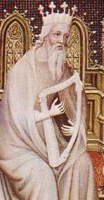
24 December as one of the Holy Ancestors of Christ
Son of Jesse, and a shepherd in his youth. Anointed by the prophet Samuel. During war with the Philistines, David, relying on God, slew the giant Goliath and won the friendship of Jonathan, son of Saul; courtier. Married to Saul's daughter Michol. Forced into exile for political reasons. Married to Abigail.When Saul and Jonathan fell in battle, David was chosen King of Judah and Israel; he reigned for 33 years. Founder of the Judean dynasty at Jerusalem. National hero as a youth, soldier, reformer, father, prophet, musician, poet, hymnist, writer, sinner, and penitent. See 1 and 2 Kings, 1 and 2 Samuel, 1 and 2 Chronicles.
c.1085 BC at Bethlehem
• c.1015 BC at Jerusalem
• buried on Mount Sion
• miners
• musicians
• poets
• singers
king with a musical instrument, usually a harp or lyre
https://catholicsaints.info/king-david/
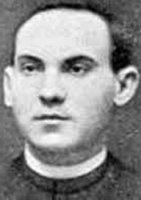
Educated by the Sisters of Mercy in Enguera, Spain; the Pious Schools in Valencia, Spain; the College of Saint Joseph Valenza; and the Seminario Conciliar Center. Ordained a priest in the archdiocese of Valencia on 17 June 1916. As a parish priest he was known for his work with children, establishing Eucharistic associations, and spreading the Forty Hours devotion. Co-adjutor of San Maria de Oliva in 1917, treasurer of Benifallim in 1920, pastor at Luchente in 1921 where he established Eucharistic devotions that led to annual mountain retreats. Martyred in the Spanish Civil War.
12 March 1893 in Enguera, Valencia, Spain
29 December 1936 in Picadero de Paterna, Valencia, Spain
11 March 2001 by Pope John Paul II
https://catholicsaints.info/blessed-jose-aparicio-sanz/
• Marcellus Akimetes
• Marcellus the Sleepless
• Marcellus l'Acemeta
• Marcello...
Marcellus inherited a large fortune in his youth. Studied at Antioch and Ephesus. Monk and abbot of the Eirenaion monastery at Constantinople. The monks of these houses were called Akiometoi (= sleepless) because they organized in groups that rotated singing in chapel so they were singing God's praises 24 hours a day. Under Marcellus, his became the most influential of such houses. In 465 Constantinople was threatened by destruction by fire; Marcellus's prayers are credited with saving the city. In 488 he attended a synod called by Saint Flavian. Participated in the Council of Chalcedon.
5th century at Apamea, Syria
c.485 at Constantinople (Istanbul, Turkey)
https://catholicsaints.info/saint-marcellus-the-righteous/
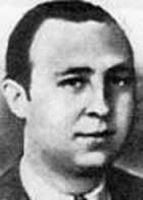
Layman in the archdiocese of Valencia, Spain. A telegrapher (telegraph operator) on the ship "Buenos Aires". Lawyer. Secretary of the Union of Rural Police. He used his legal skills for the poor, working for legal aid. Member of Catholic Action. Member of Nocturnal Adoration. A pious man, he went to Mass daily and taught catechism. Jounalist. Married to Francisca Bosch Pieva on 22 April 1935. Arrested on 3 September 1936 for being a faithful Christian, he was martyred in the Spanish Civil War.
22 February 1911 in Sueca, Valencia, Spain
29 December 1936 in Picadero de Paterna, Valencia, Spain
11 March 2001 by Pope John Paul II
https://catholicsaints.info/blessed-jose-perpina-nacher/
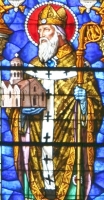
• 30 September (translation of relics)
• 4 January (Greek calendar)
Evangelist sent from Rome to Gaul c.250. Worked with Saint Saturninus of Toulouse and Saint Denis of Paris. First bishop of Arles, Gaul (modern France. His cultus is ancient; Pope Zosimus wrote about him in 417. Often confused with the Trophimus mentioned by Saint Paul the Apostle, they were actually centuries apart.
c.280
• against drought
• Arles, France
• children
• bishop carrying his eyes
• bishop having his eyes put out
• bishop standing with lions
https://catholicsaints.info/saint-trophimus-of-arles/
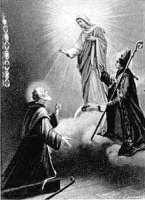
Gerardo, Gerardus
Born to the Italian nobility. Cared for his mother until her death, then became a hermit for several years on Mount Etna, Sicily. Franciscan lay brother. Cook for Franciscan house. Known for his childlike simplicity, and the many graces that derived from it.
c.1267 at Valenzo, Italy
• c.1342 of natural causes
• many healings reported in connection with his relics
13 May 1908 by Pope Saint Pius X (cultus confirmed)
https://catholicsaints.info/blessed-gerard-cagnoli/
Gerardus, Giraldus, Girard, Giraud, Giralda
Studied at the cathedral school in Rheims, France; student of Gerbert of Aurillac, who would later become Pope Sylvester II, and of Saint Fulbert of Chartres. Benedictine monk at Lagny, diocese of Meaux, France. Abbot of Saint-Arnoul Abbey. Abbot of Fontenelle Abbey where his efforts at reform led to his murder by an unruly monk.
late 10th century near Mantes in the Seine Valley of France
murdered by a monk during the night of 29 to 30 December 1031 at Fontenelle Abbey, Normandy, France
https://catholicsaints.info/saint-girald-of-fontenelle/
Thaddee
Ninth-century Scythian slave. Relative of Saint Theodore Studites. Freed from slavery, Thaddeus became a monk. His house was dispersed in the iconoclast persecutions of Emperor Leo V. Thaddeus was arrested with several brother monks, ordered to reject icons and images, and to trample on an icon of Christ; he refused. Martyr.
received 130 lashes and was left for dead; he survived two days before dying of the injuries
https://catholicsaints.info/saint-thaddeus-of-scythia/
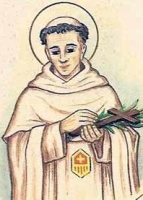
Francesco
Mercedarian. Missionary to Chile in 1569. Worked in Ecuador and then in Cusco, Peru, working from the Mercedarian convent there. Martyred by pagan natives while preaching.
1546 in Rioja, Spain
1590 in Santa Cruz de la Sierra, Tucman, Peru
https://catholicsaints.info/blessed-francis-ruiz/
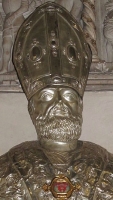
Maternian, Matinian, Martinien, Martinianus
Bishop of Milan, Italy in 423. Attended the Council of Ephesus. Fought the Nestorian heresy that denied that Mary was the Mother of God.
29 December 435 of natural causes
https://catholicsaints.info/saint-martinian-of-milan/
Libóso, Lybosus
Bishop of Vaga (modern Béja, Tunisia). Part of the Council of Carthage in 256. Several of his letters have survived to today. Martyred in the persecutions of Valerian.
• c.258 near Carthage (modern Tunis, Tunisia)
• buried in the cemetery of Carthage
https://catholicsaints.info/saint-libosus-of-vaga/
• Aileran Sapiens
• Aileran the Wise
Monk and teacher at the monastery of Clonard, Ireland. Rector in 650. Noted scholar and master of Greek and Latin. Wrote several theological treatises and biographies of Saint Brigid, Saint Fechin and Saint Patrick.
29 December 664 of natural causes
https://catholicsaints.info/saint-aileran/
Seventh century courtier. Disenchanted with the worldly life, he lived for a while as a hermit. Founded the abbey of Gambron-sur-l'Authion, France, which simultaneously used the Rules of Saint Benedict and Saint Columbanus, and served as its first abbot.
diocese of Séez, France
https://catholicsaints.info/saint-albert-of-gambron/
Florentius
Bishop of Bourges, France for 20 years. Known for his intense spiritual life, and his work to enhance the spiritual life of his flock. The town of Saint-Florent-sur-Cher is named for him.
664 of natural causes
https://catholicsaints.info/saint-florent-de-bourges/
Married lay woman, and a mother. Martyred with her husband and son, whose names have not come down to us, the persecutions of Valerian.
c.258 in Carthage (modern Tunis Tunisia)
https://catholicsaints.info/saint-quartillosa-of-carthage/
Gentile first century convert. Missionary with Saint Paul. Pilgim to Jerusalem where his Gentile presence in the temple stated a riot.
Ephesus
1st century
https://catholicsaints.info/saint-trophimus-of-ephesus/
Dominican lay brother in Seville, Spain. Miracle worker and healer. When he was in charge of giving bread to the poor, the bins never ran empty.
1597 of natural causes
https://catholicsaints.info/blessed-paul-mary/
A group of Christians executed together for their faith. The only details to survive are eight names - Crescentius, Dominic, Honoratus, Lybosus, Primian, Saturninus, Secundus and Victor.
https://catholicsaints.info/martyrs-of-north-africa-29-december/
A group of Christians executed together for their faith. The only details to survive are three names - Boniface, Callistus and Felix.
https://catholicsaints.info/martyrs-of-rome-29-december/
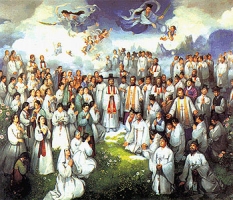
20 September as part of the Martyrs of Korea
A group of seven lay woman in the apostolic vicariate of Korea who were martyred together.
• Barbara Cho Chung-I
• Barbara Ko Sun-I
• Benedicta Hyong Kyong-Nyon
• Elisabeth Chong Chong-Hye
• Magdalena Han Yong-I
• Magdalena Yi Yong-Dok
• Petrus Ch'oe Ch'ang-Hub
South Korea
beheaded on 29 December 1839 at the Small West Gate, Seoul, South Korea
6 May 1984 by Pope John Paul II
https://catholicsaints.info/martyrs-of-seoul/
Thousands of people were murdered in the anti-Catholic persecutions of the Spanish Civil War from 1934 to 1939. I have pages on each of them, but in most cases I have only found very minimal information. They are available on the CatholicSaints.Info site through these links:
• Blessed Aproniano de Felipe González
• Blessed Enrique Juan Requena
• Blessed Jacinto Gutiérrez Terciado
• Blessed Juan Bautista Ferreres Boluda
• Peter of Lutra
CatholicSaints.Info Portable Edition